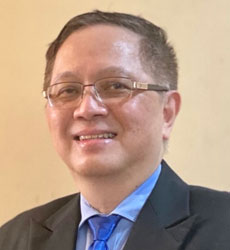April 22, 2025 l Manila Bulletin

When Republic Act No. 11223 was enacted in February 2019, it was hailed as a landmark achievement in Philippine public health policy. Also known as the Universal Health Care (UHC) Act, the law carried the promise that every Filipino would have equitable access to quality and affordable health services without facing financial hardship. Its vision was ambitious yet it proved to be timely as the nation faced the crisis brought by the pandemic a year later.
For countries with universal health coverage, the so-called equity effect has resulted in significant economic benefits – notably an increase in productivity, improved social wellbeing, and poverty reduction. A healthy workforce leads to higher levels of labor participation and economic output since individuals are protected from the devastating financial impact of unexpected health care expenses.
But more than six years after the Philippine UHC Act was signed into law, many Filipinos still struggle to obtain quality treatment or even basic care services. The weaknesses of this law goes beyond technical execution and reveal deep structural issues in our health system.
The gap between aspiration and implementation has become evident. Budget allocations remain uneven, favoring Metro Manila and its adjacent regions while leaving far-flung communities underserved. Tasked with managing health services at the grassroots level, local government units in many areas often lack the personnel, training, and equipment to deliver reliable care.
Meanwhile, key players in our health landscape, such as the members of the Philippine Hospital Association and the Private Hospitals Association of the Philippines, face delayed reimbursements and unclear policies, making it difficult for them to partner effectively with government health authorities.
Another issue is the Congress’ recent defunding of the Philippine Health Insurance Corp. (PhilHealth), which was given a zero subsidy in the 2025 national budget. While PhilHealth has existing funds from member contributions, its progress toward comprehensive coverage could be hindered, and its ability to retain health facilities might also be affected, especially with delays in payment and benefit adjustments.
In the face of these challenges, public health institutions such as the Vicente Sotto Memorial Medical Center (VSMMC) and the Cebu Normal University (CNU) College of Medicine are stepping up to reinforce the intent of the 2019 UHC law co-authored by then Senate President Vicente Sotto III. Named after Sotto’s grandfather, VSMMC has long served as a vital health institution in the Visayan regions.
Recently, a new era in Philippine medical education began with the inauguration of VSMMC’s Medical Simulation Center – a facility designed to provide hands-on experience to future doctors before facing real-life medical situations. The center is equipped with cutting-edge technology that allows CNU medical students to refine their skills in a controlled environment. It is envisioned as a training ground for provincial doctors and a hub for telemedicine as well as a model for decentralized public health care.
During the launch event, Sotto said the center is an offshoot of Republic Act No. 11509 or the “Doktor Para sa Bayan Act of 2020,” of which he was the principal author. That law established a medical scholarship and return service program for aspiring doctors who will serve in rural communities. It was a commitment to the future of health care in the country, empowering the next generation of medical students and ensuring that high-quality care is within reach of all citizens.
Ultimately, such laws can only be as effective as their implementation. If the vision of universal health care is to be fully realized, it must be grounded in both urban and rural areas across the country, where the future of public health is taking shape.
***The views expressed herein are his own and do not necessarily reflect the opinion of his office as well as FINEX. For comments, email nextgenmedia@gmail.com. Photo is from Pinterest.

